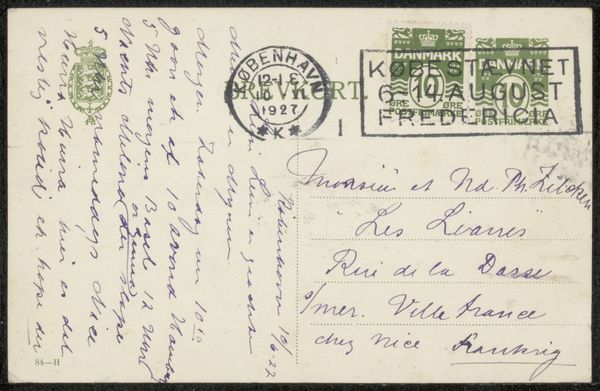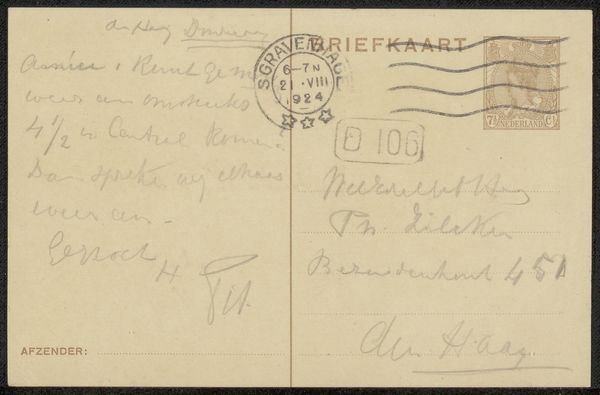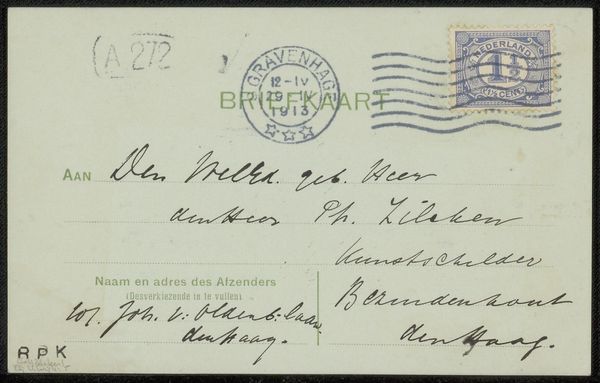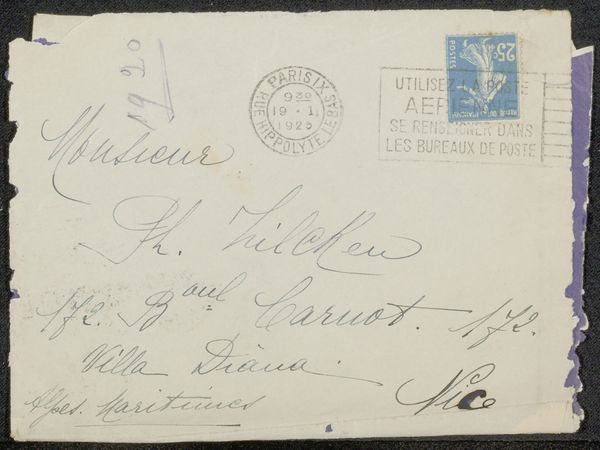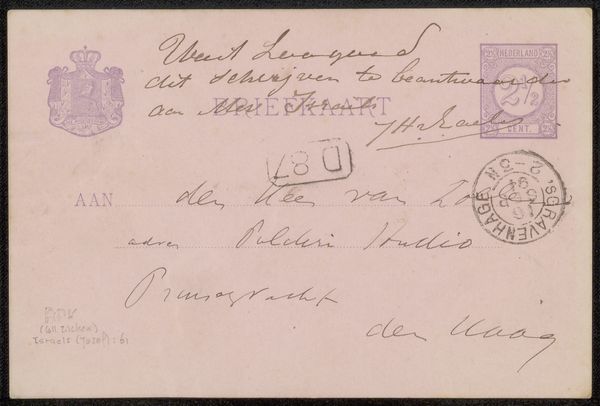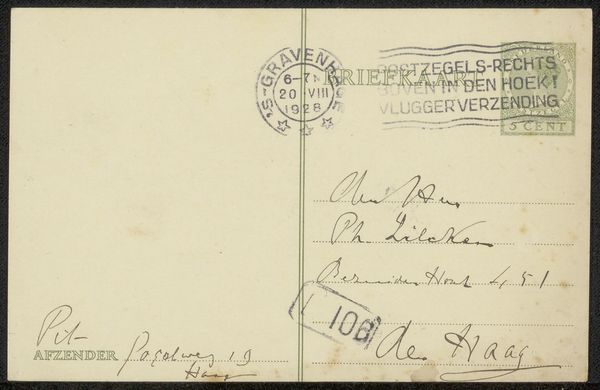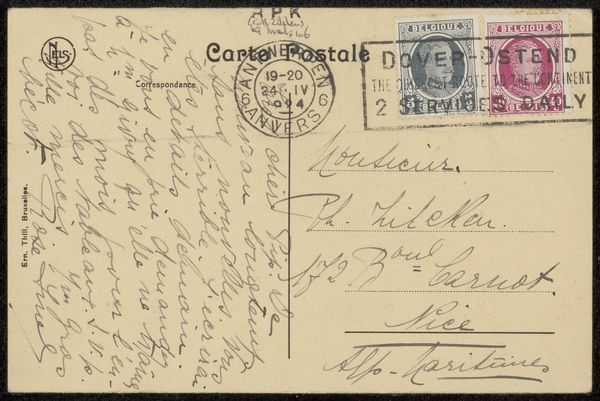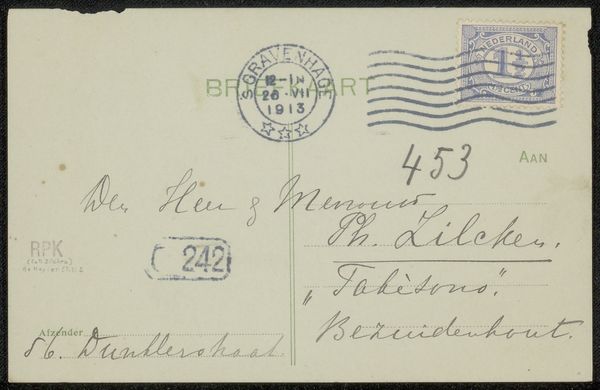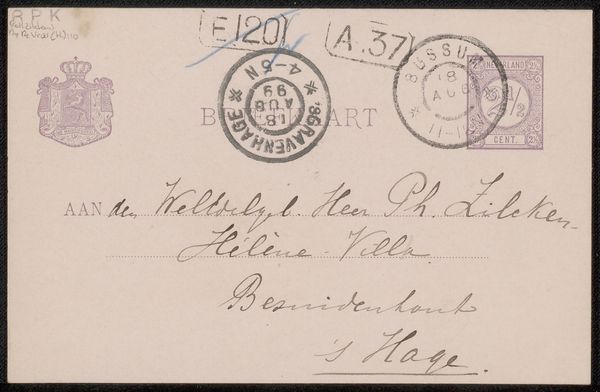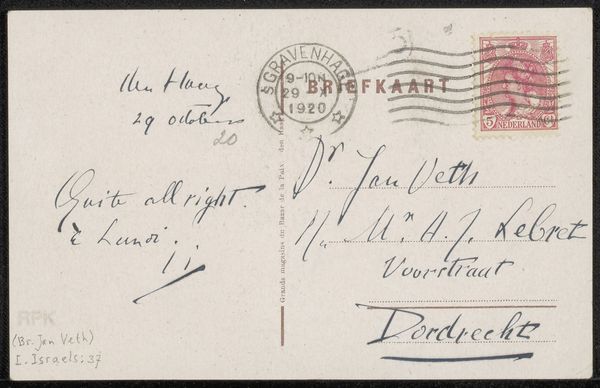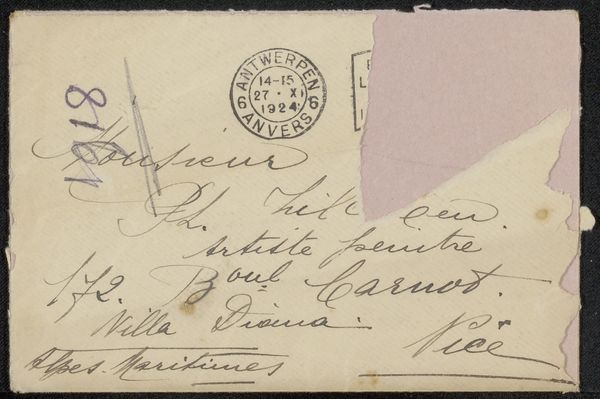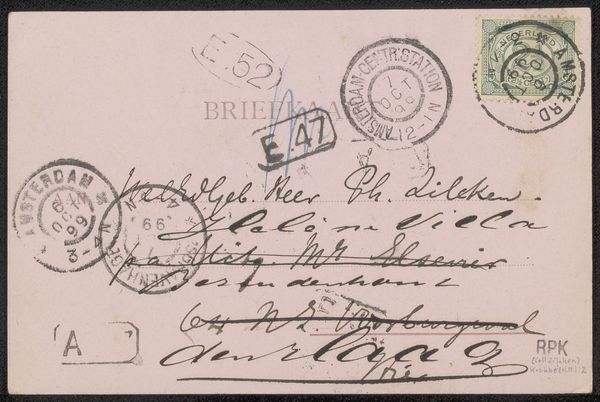
drawing, ink, pen
#
portrait
#
drawing
#
hand-lettering
#
pen sketch
#
hand drawn type
#
hand lettering
#
personal sketchbook
#
ink
#
ink drawing experimentation
#
pen-ink sketch
#
pen work
#
sketchbook drawing
#
pen
#
sketchbook art
Copyright: Rijks Museum: Open Domain
Editor: Here we have "Briefkaart aan Jan Veth," a pen and ink drawing from before 1885, by Chap van Deventer. It's simple, unassuming, but also quite intimate. The handwriting itself becomes a visual element. What catches your eye, and how do you interpret this everyday artifact? Curator: The humblest objects often speak volumes. This postcard, seemingly just a message, carries embedded social and cultural significance. Look at the stamps, the scripted fonts – they tell stories of bureaucracy, social networks, and a particular era's aesthetics. Editor: Aesthetics even in a simple postcard? Curator: Absolutely. Notice how the official stamps and seals juxtapose with the sender’s handwriting. One represents state power, the other personal expression. Van Deventer isn’t just sending information; he’s participating in a visual dialogue. Even the coat of arms embossed hints at prevailing cultural symbols of the time, signaling power structures and shared values. Editor: So the choice of script, the very act of handwriting instead of printing, adds layers of meaning? Curator: Precisely. The handwritten text adds a layer of personalization that transcends the functionality of the message. Can you see how each flourish and curve infuses this transient missive with a distinct human touch, revealing social etiquette, the nuance of relationship, and the quiet cultural memory embedded in penmanship itself? What about that catches your attention? Editor: I guess it's like a miniature portrait, capturing a moment in time. I never thought I'd see so much cultural memory embedded in something so small. Curator: Exactly. It encourages us to look deeper, doesn't it?
Comments
No comments
Be the first to comment and join the conversation on the ultimate creative platform.
